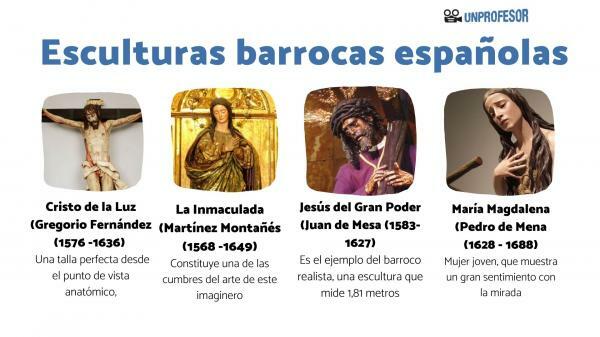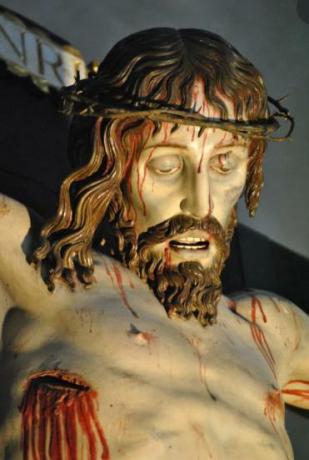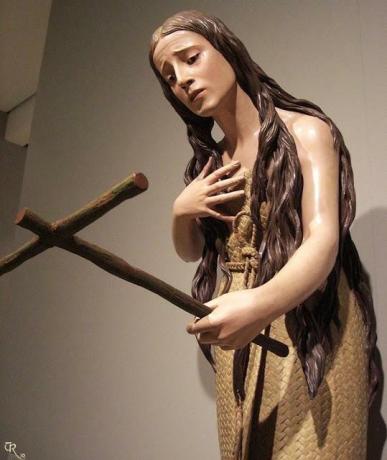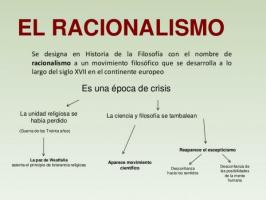Famous Spanish BAROQUE Sculptures

The Spanish Baroque sculpture is strongly related to Counter Reformation, being an artistic style of religious character that tries to move to the devotion of the believers both in the public sphere and in private. The altarpieces, the processional steps and the images will be some of the types of sculptures that flood cathedrals, churches, monasteries, convents, hermitages and private altars. To this devotional character is added the intention of instructing the people and awakening feelings of pity, compassion and guilt.
In this lesson from unPROFESOR.com we offer you a selection of the best Spanish baroque sculptures.
Before fully getting to know the most outstanding Spanish Baroque sculptures, it is important that we know the artistic characteristics of this cultural movement. Next, we leave you a review of the characteristics of baroque sculpture most important Spanish:
- Spanish Baroque sculpture dates from the first half of the seventeenth century, standing out at this first moment the Castilian school, while it will be the Andalusian school the one that stood out during the second half of the century.
- Already in the full Baroque, in the final moments of that century, the focus shifted to the Andalusia and Levante area.
- The existence of a first moment of more expressive simplicity, to pass to greater dynamism and theatricality from the second half of the seventeenth century.
- Within the type of sculptures, the main figure is the Virgin in her youth or as a suffering mother. A mariological sculpture, in which there are also representations of images of Christ as a man who suffers, being one of the most represented themes the theme of the Passion, to them are added sculptures of angels and Saints.
- The sculpture is of Round bump, on polychrome wood. Some realistic figures in which hairpieces are used, fabrics to make the clothes and glass eyes.
- In the altarpieces both free-standing figures and bas-reliefs appear, also carrying out Holy Week processional steps and bas-reliefs in the choir stalls.
- The most used material is wood, abandoning the technique of stew and polychrome. The wood was also covered with gold leaf to add luminosity to the paint that was applied.
- Other materials that were used were marble and stone, especially for tombs, and bronze will remain as a material for court sculpture.

Image: Tom Art History
The baroque art in Spain He had the School of Valladolid characterized by the intense realism of his religious sculpture, sculptures in which pain and pathos are shown. The highest representative was the sculptor Gregorio Fernández (1576 -1636).
This sculptor is characterized by the anatomical perfection of the bodies, the smoothness of the skin and the tension of the muscles. He was noted for his polychromies. Among his works:
- Christ of the Light. A perfect carving from the anatomical point of view, in addition to reflecting the suffering of Christ. Without a doubt, one of the best Spanish Baroque sculptures.
- The Pieta (1610-1612), Church of Carmen (Burgos). First known "piety" of Gregorio Fernández, a work of clear Mannerist influence. It is a very high relief of large size made of polychrome wood.
- Reclining Christ from the church of San Miguel and San Julián de Valladolid, Work dated around 1634, round, with great detail and pathos, carved in its entirety, making it possible to see the veil of the palate. It is on a divan in one of the chapels of the church, at whose feet rest the crown of thorns, braided in hawthorn, and the three nails, on individual cushions.

In the Andalusian School, the sculptures are more serene, with a more classic realism and with a predominance of the stew technique. Among the creators, Martínez Montañés and Juan de Mesa, both in Seville, and Alonso Cano and Pedro de Mena in Granada stand out.
Works by Martínez Montañés (1568 -1649)
- The Christ of Clemency. This is one of the topics most covered by Martínez Montañés, highlighting that of Clemencia, preserved in the Cathedral of Seville, and which constitutes one of the summits of the art of this image maker. This image is better known as Cristo de los Cálices, for having been in the sacristy of that name of the cathedral.
- Immaculate. In 1631 he finished the altarpiece of the chapels of the Immaculate in the Sevillian cathedral, highlighting the central figure of the Immaculate Conception, popularly known as "the Little Blindness", in addition to the images of Saint John the Baptist in the style of Donatello and that of Saint Gregory. The sculpture of the Immaculate Conception has an abundance of clothing, with the head and hands; lopsided.
Works by Juan de Mesa (1583-1627)
The Jesus of the Great Power. This sculpture is an example of realistic baroque, a sculpture that measures 1.81 meters in height and is made of cedar wood. It is a work from the first phase of the Baroque and is evident in the drama and roughness of some elements such as the crown of thorns or the intensity of the face.
Works by Alonso Cano (1601-1667)
- The Immaculate Conception of the Cathedral of Granada. Work made in 1655 in polychrome wood of about 50 cm in height, work of great finesse and virtuosity.
- Virgin of the Olive
- Altarpiece of Lebrija
Works by Pedro de Mena (1628 - 1688)
- Representation of Mary Magdalene. La Magdalena de Mena is a young woman, who shows great feeling with a sad look and a large hair that falls on her shoulders. The drama can be seen in the open right hand on his chest and the crucifix that he holds in his left hand. She is a highly realistic piece that conveys a mystical and spiritual feeling.
- San Francisco de Asis
- Ecce hommo



